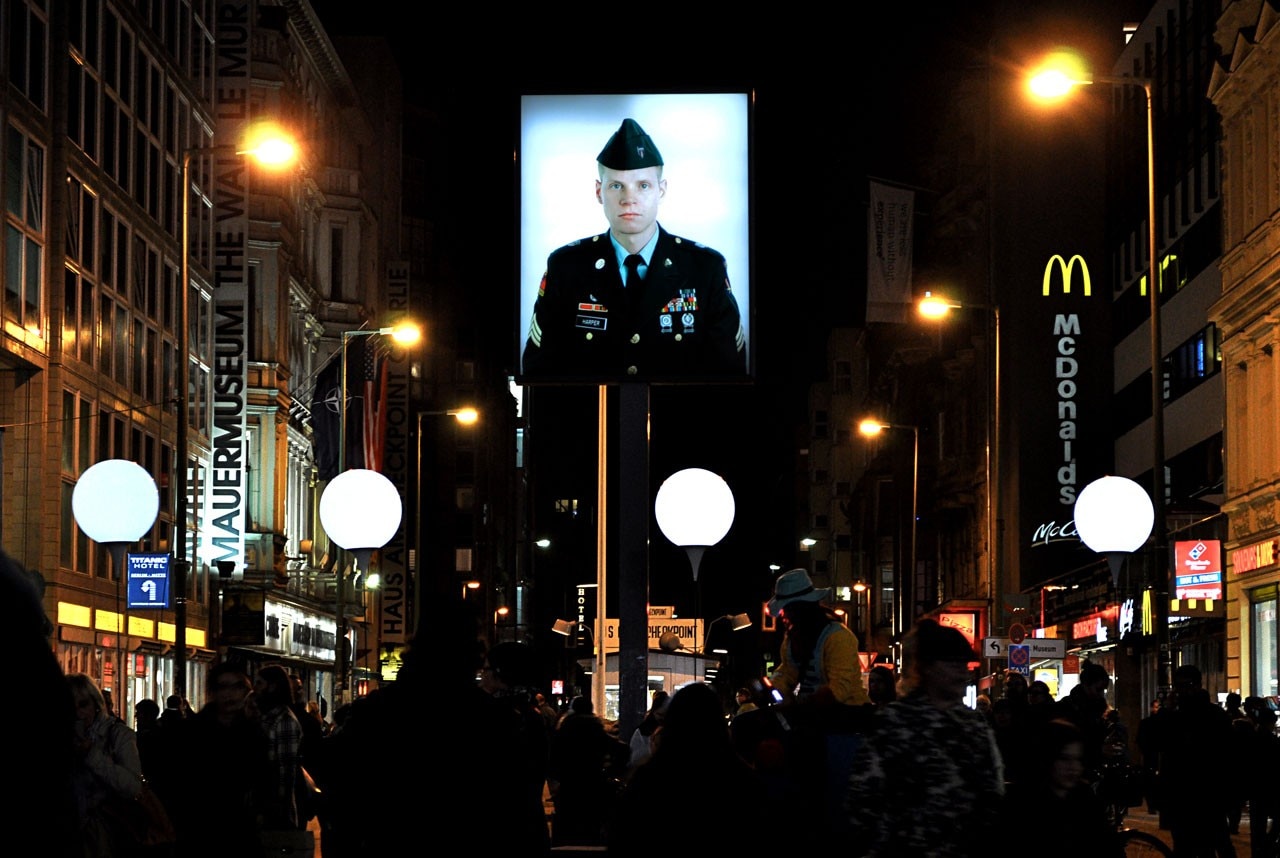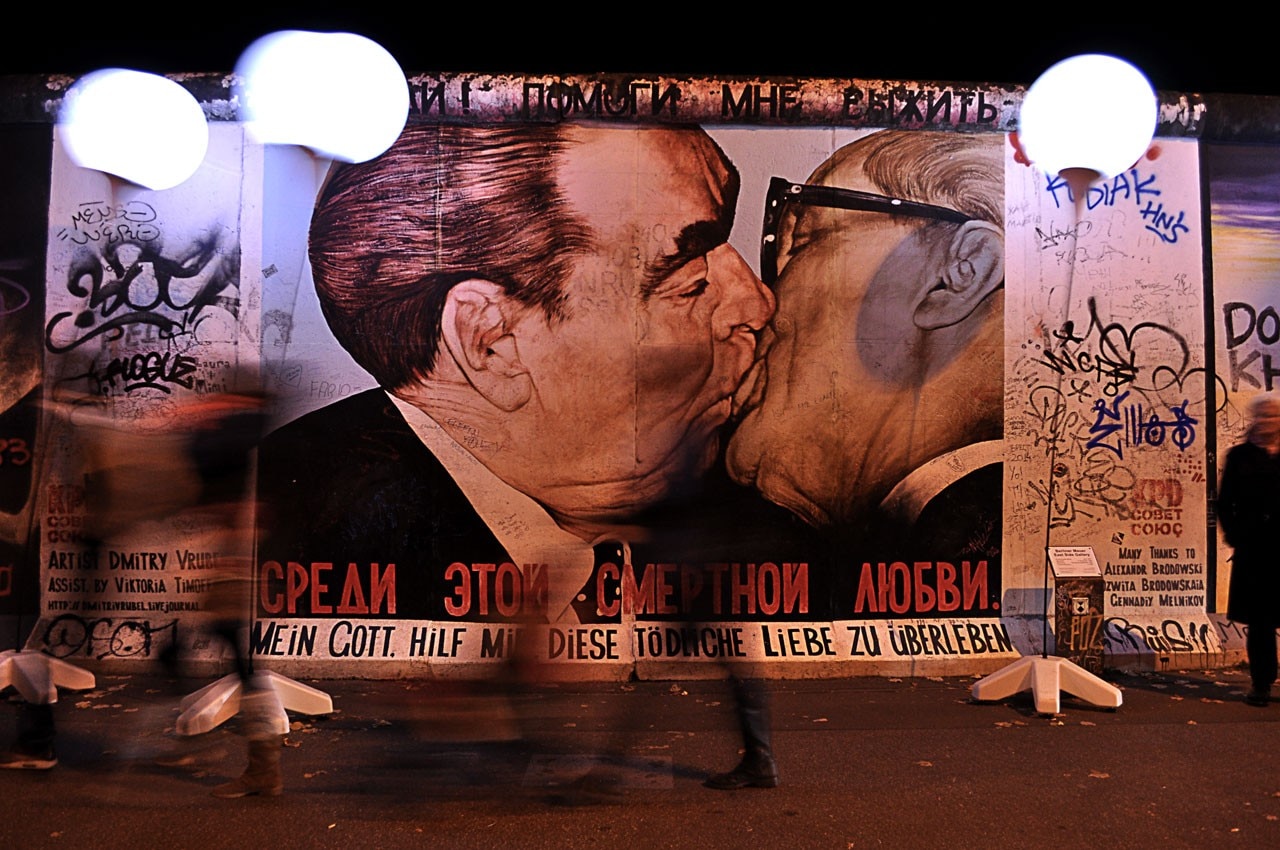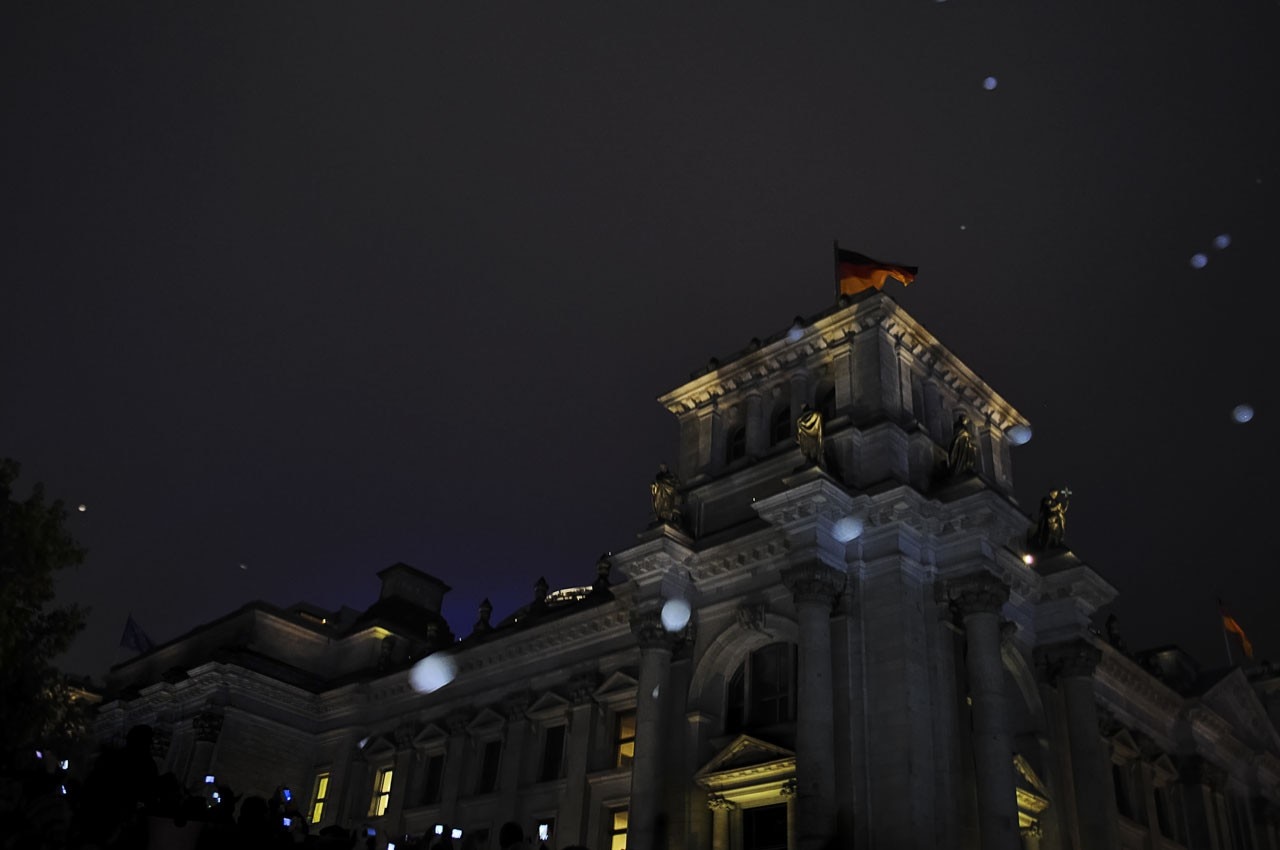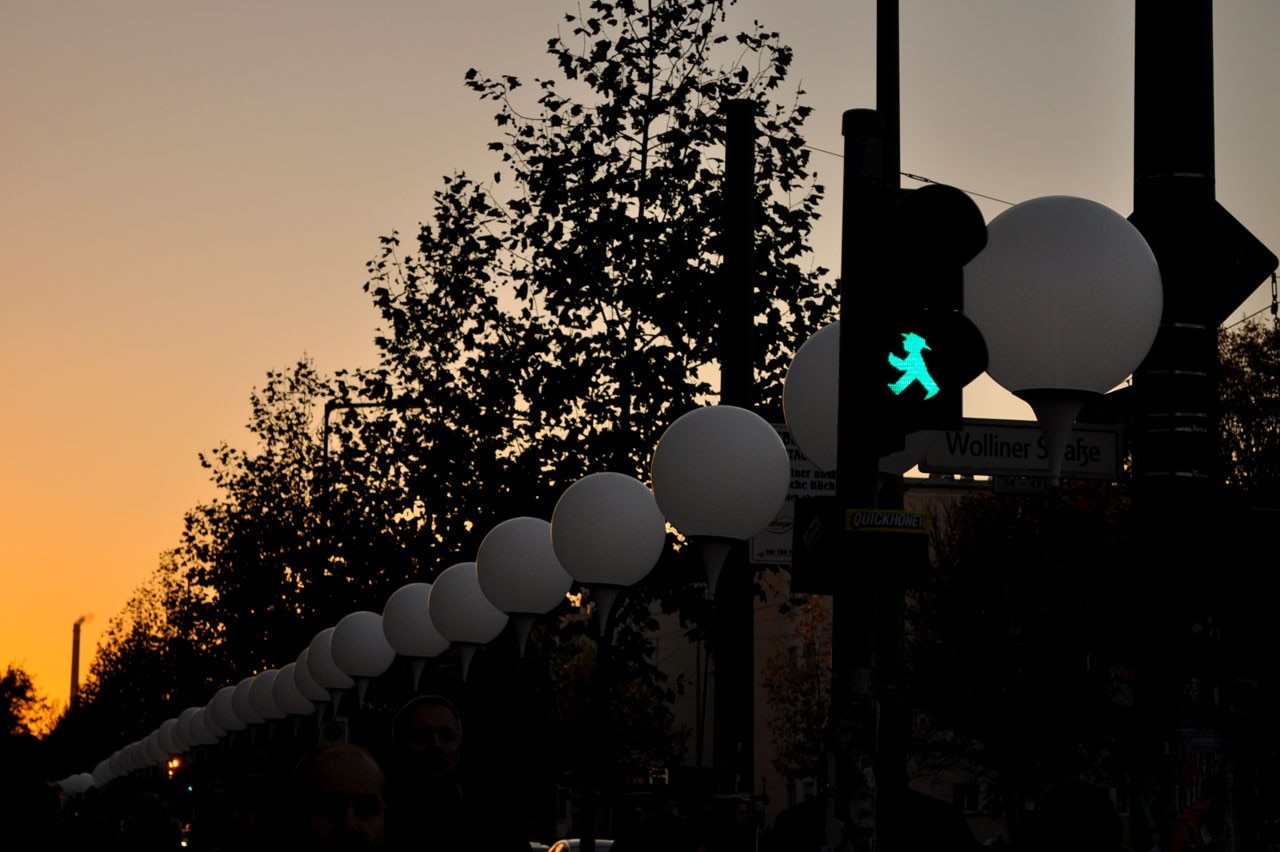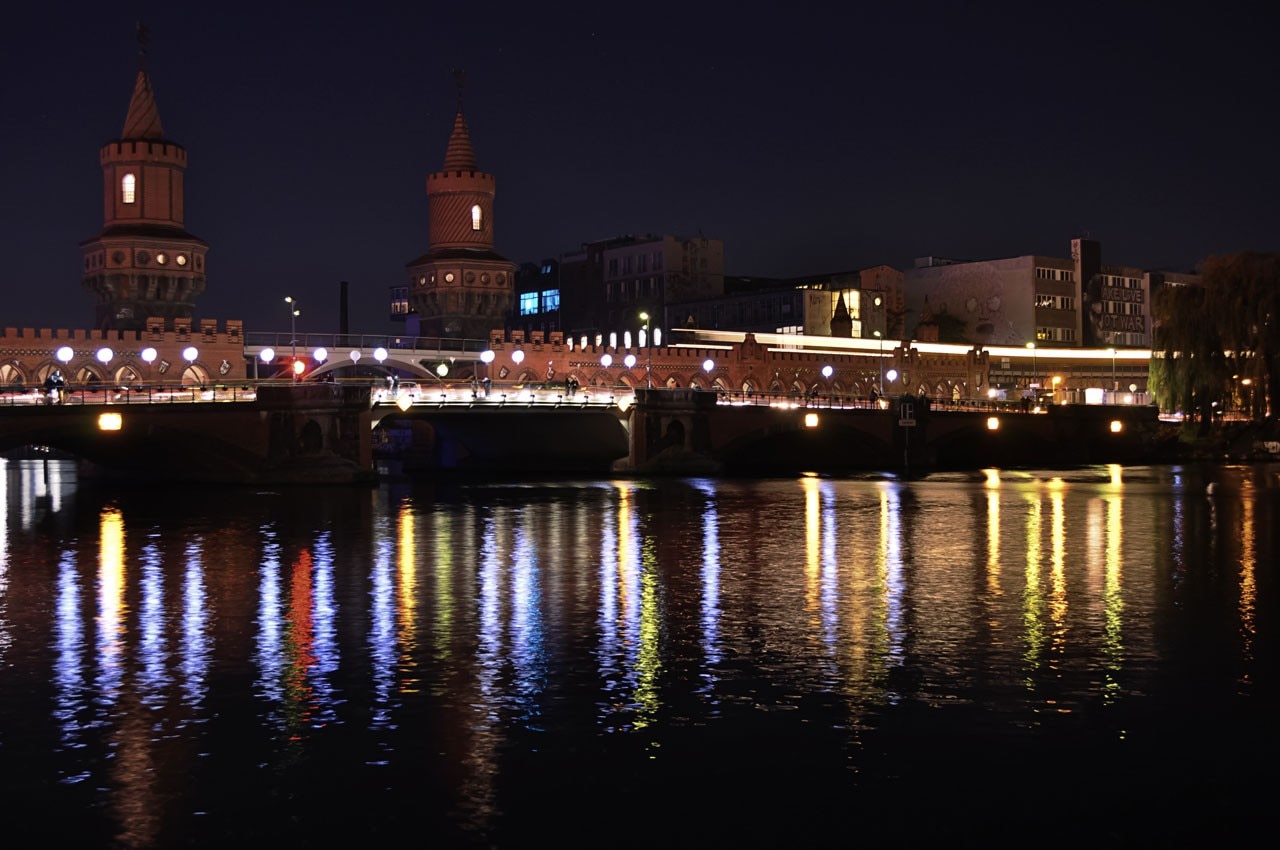
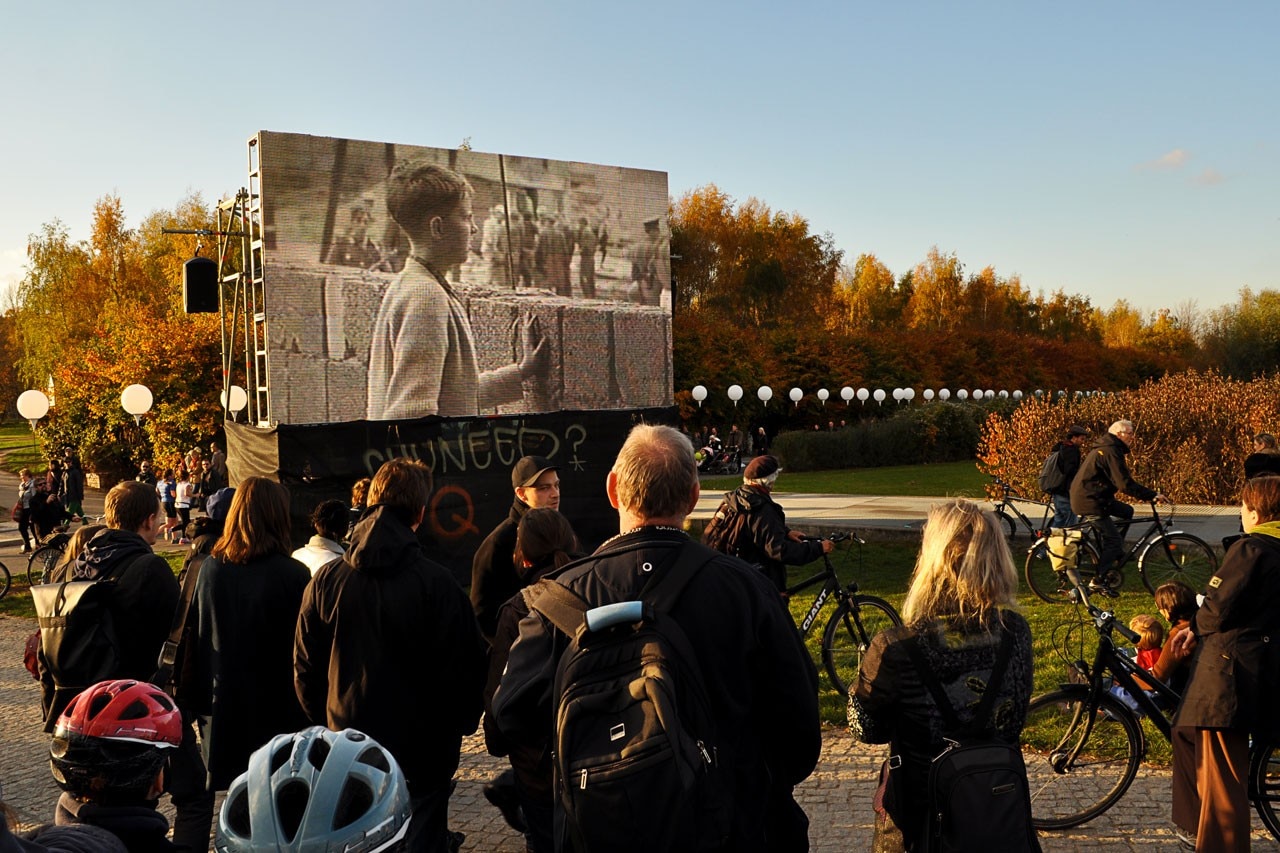
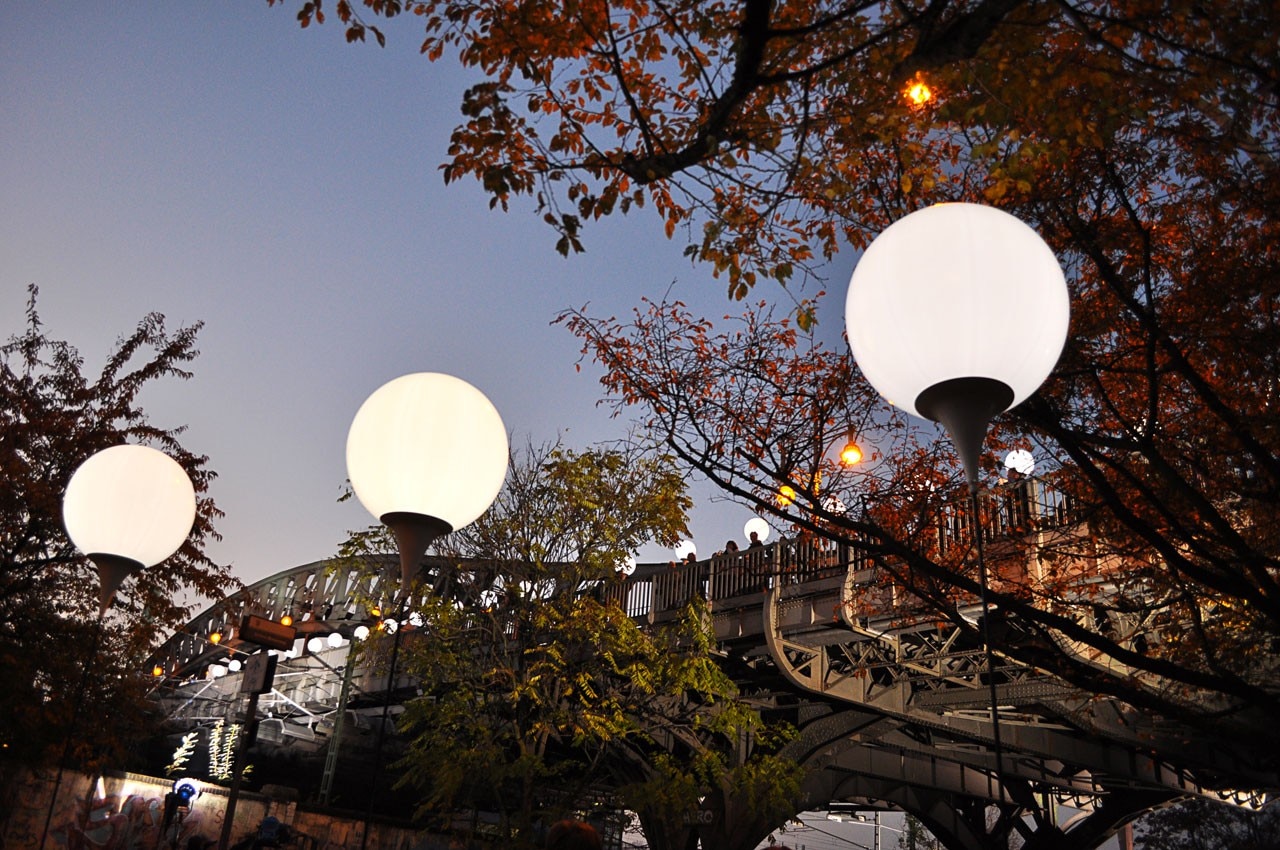
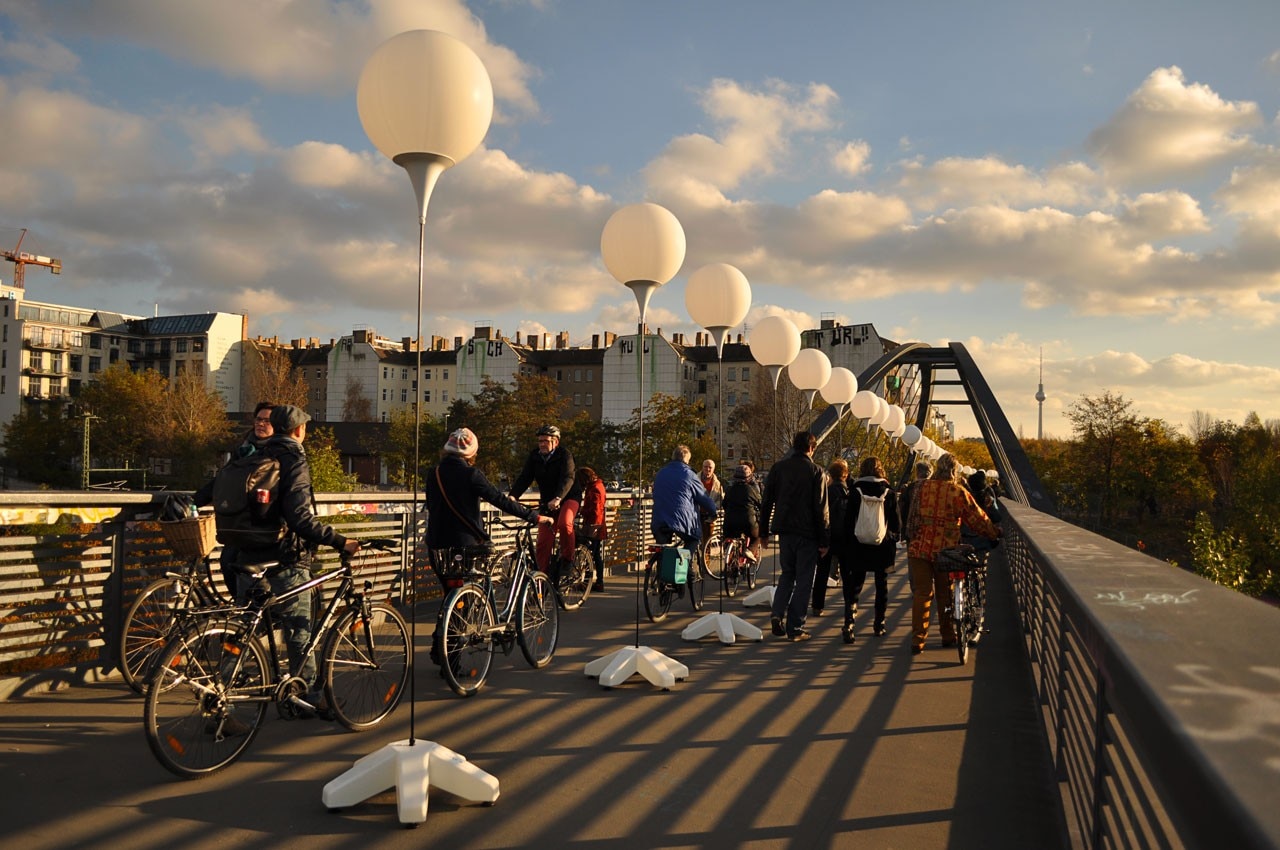
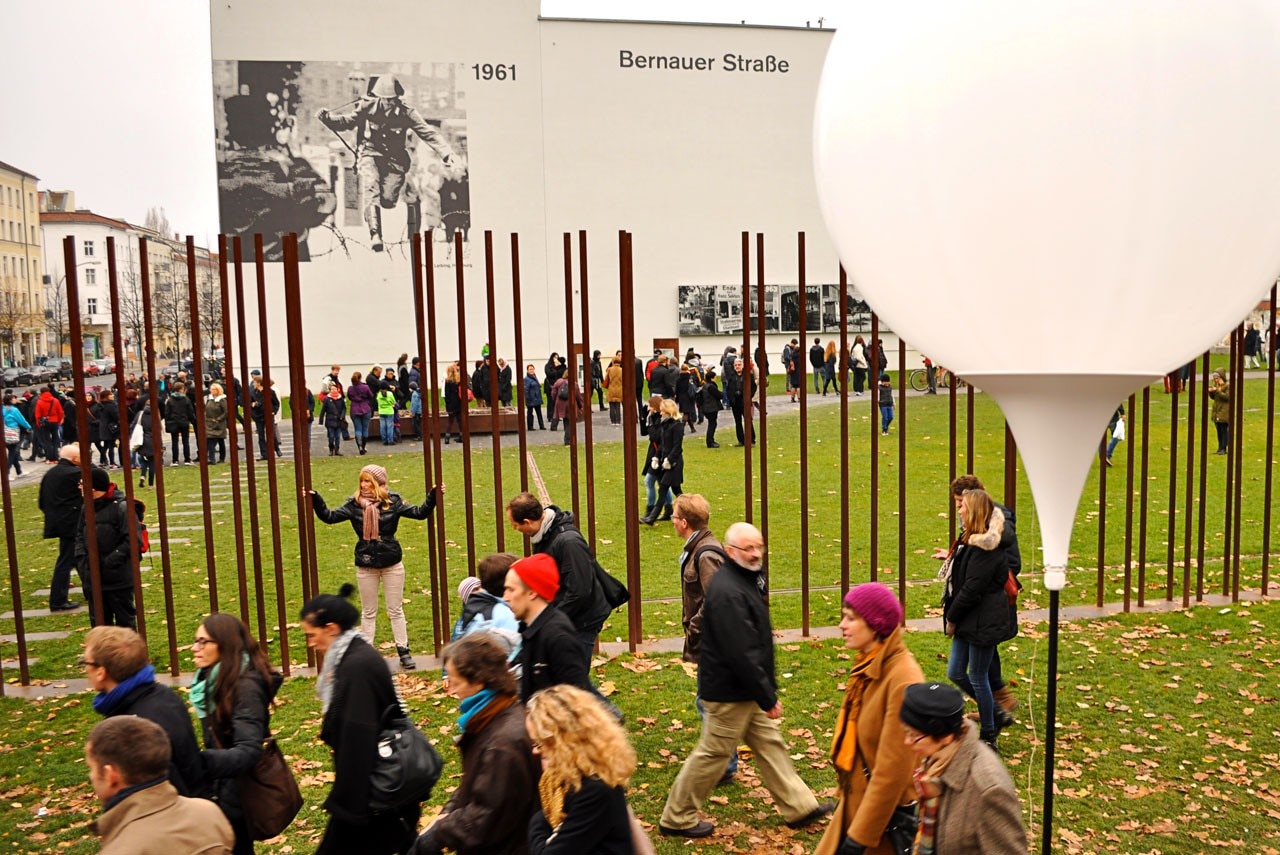
Bornholmer Strasse, the northernmost border crossing, was a gate allowing citizens of the Federal Republic to cross to the East while blocking the flow in the opposite direction. From the bridge, you can see the tracks running parallel to a long line of balloon totems that disappears into the dense and coloured autumn trees, merging with the city of the modern and heavy infrastructure.
Mauerpark invites you along a suspended passageway over thick, yellowed vegetation, linear and always changing, to a rise that, 25 years ago, formed a concrete barrier – albeit with the Berliner Fernsehturm, a TV tower that became a landmark in the German capital, always visible in the background, like the needle of a compass.
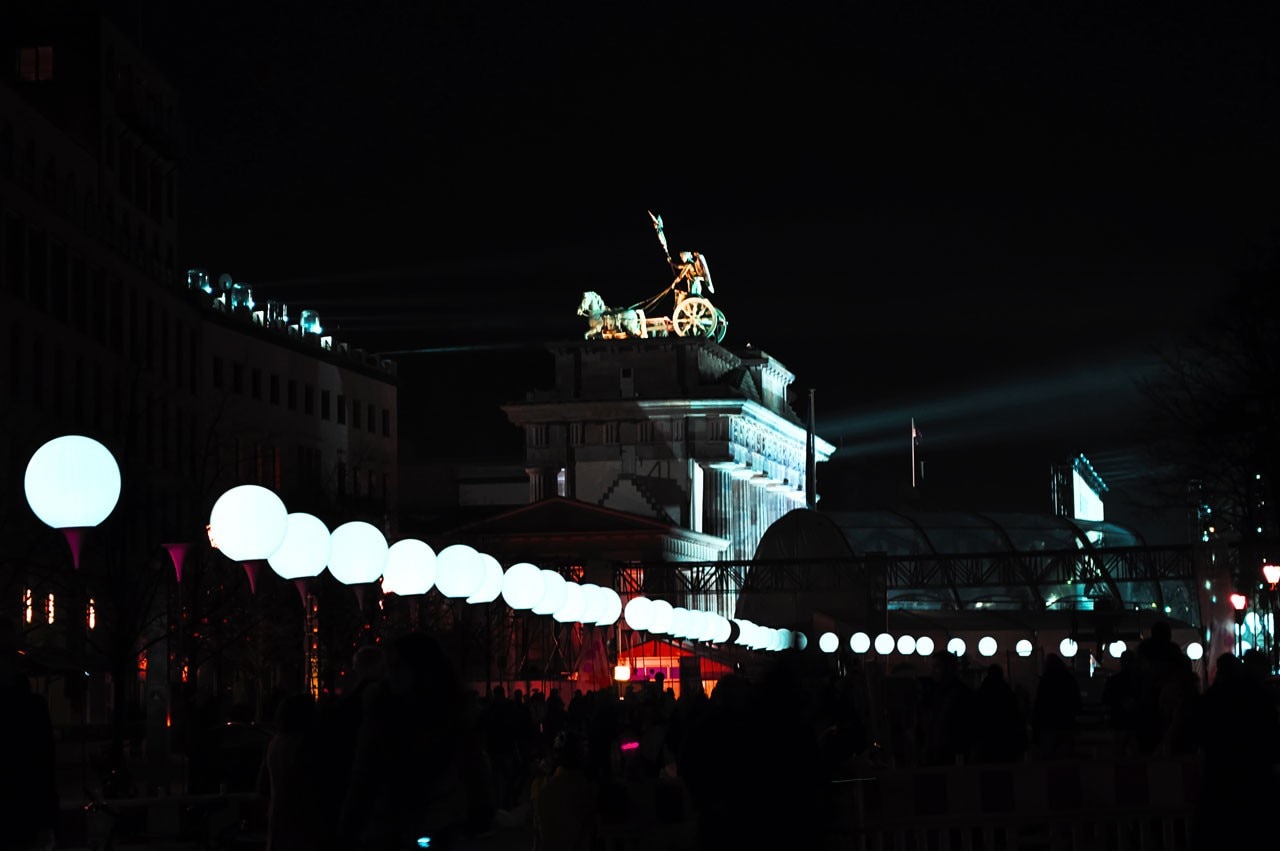
The Wall Memorial on Bernauer Strasse was turned into a 1.4 km open-air exhibition displaying the faces and photographs of remarkable escapes, surrounded by the still visible signs of fortifications, and leading to the steps of the now rebuilt church of Reconciliation. The passing of the years is marked on the sides of the buildings that faced the Wall, now reconstructed in this section with metal rods that permit easy passage, evoking the border but crucially offering a chance to cross it.
Brandenburg Gate. The hub of public events and the core focus, this was not easily approached and traffic was blocked long before the event commenced. This is where the symbols of the revolution were presented, the music continued throughout the evening and the first balloon flew into the sky on 9 November 2014.
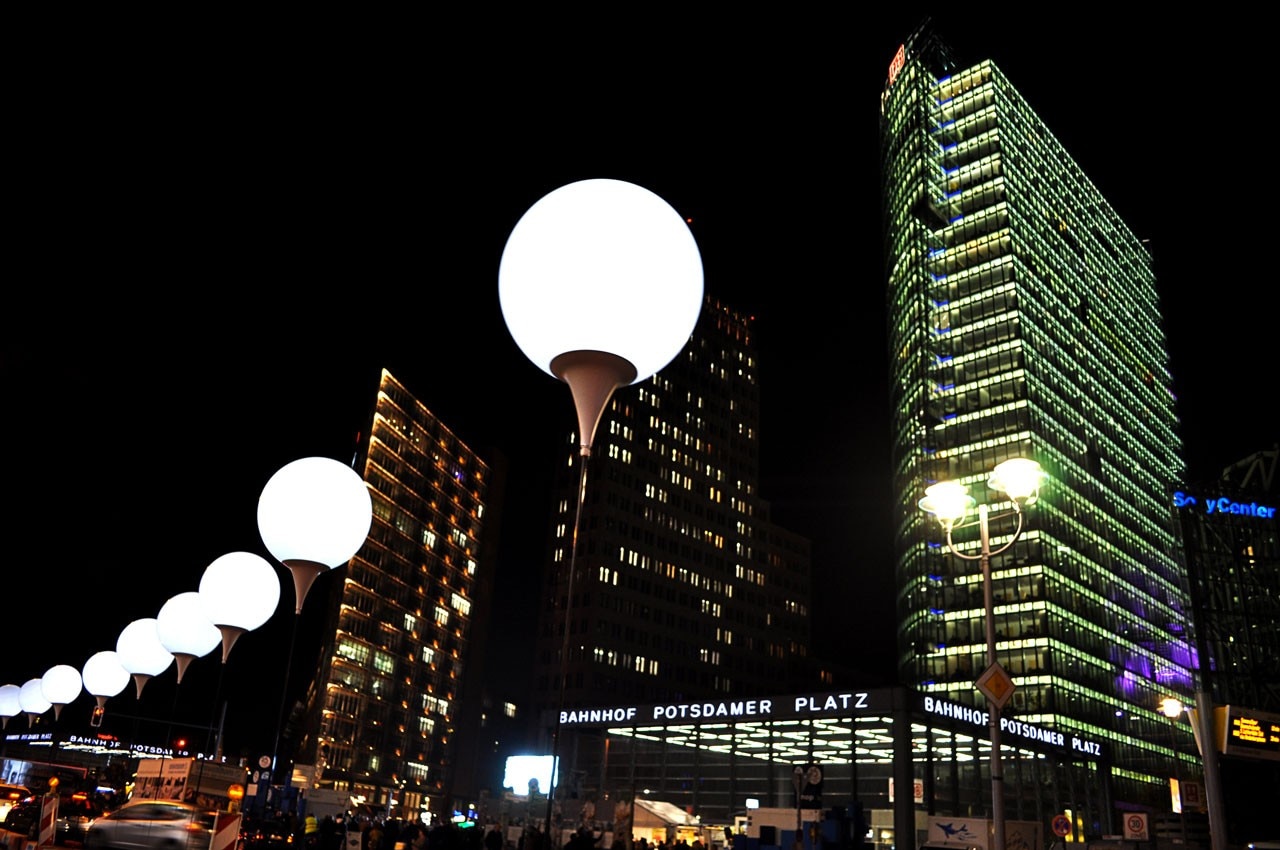
Potsdamer Platz. The scenario of stories belonging to a now different city with a complex urban programme and where differentiated paving highlights the previously fortified line. Potsdamer is a hollow square beneath which the metro travels and dominated above by the recently built skyscrapers that seem to dictate the new city’s rules of living, building and design.
Checkpoint Charlie. Two sides acting as a reminder of the strict rules in the West and Soviet sectors. A shed with a level crossing conveys the weight of a wall in terms of significance and bitter consequences when there is no way in or out.
